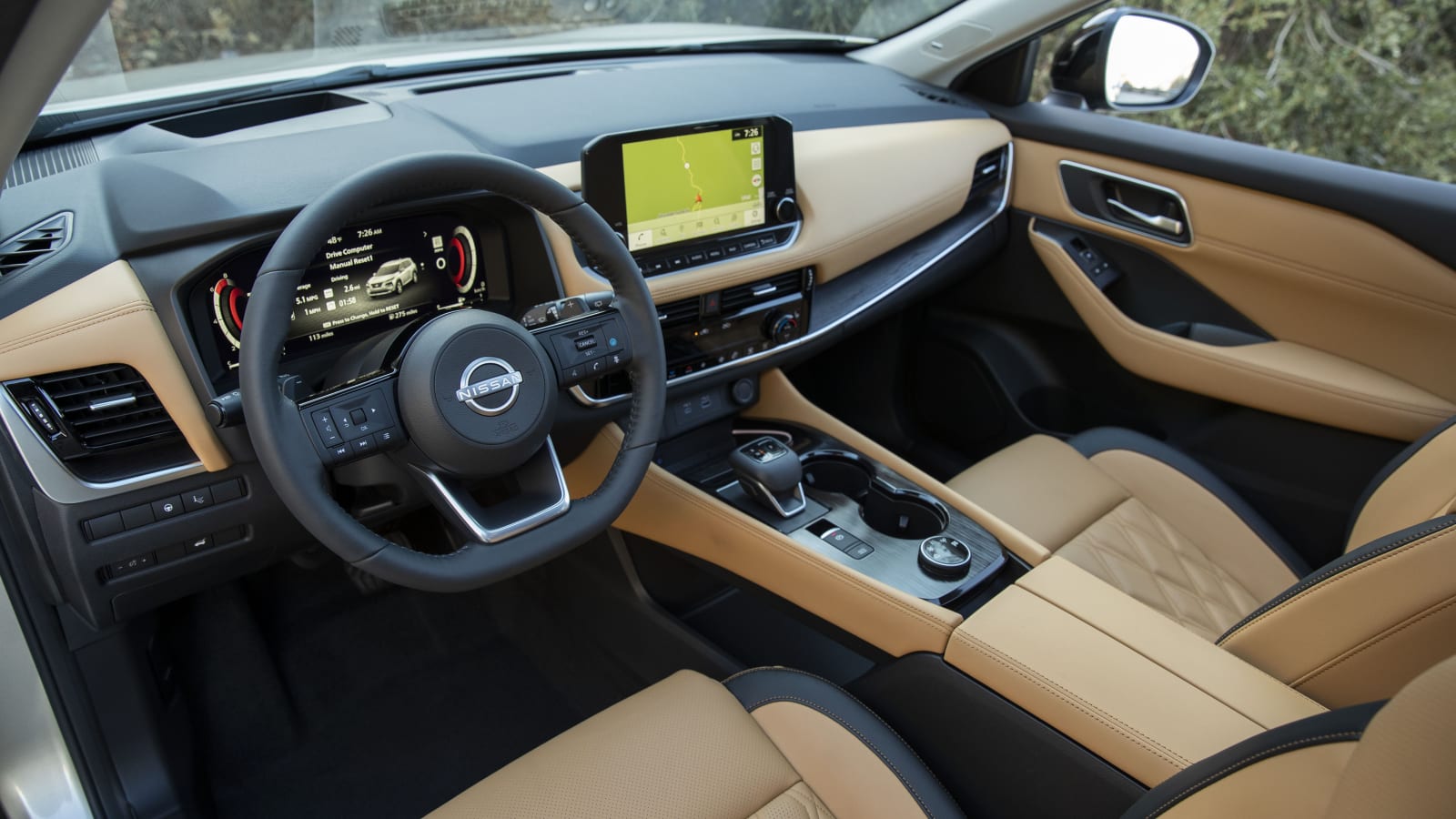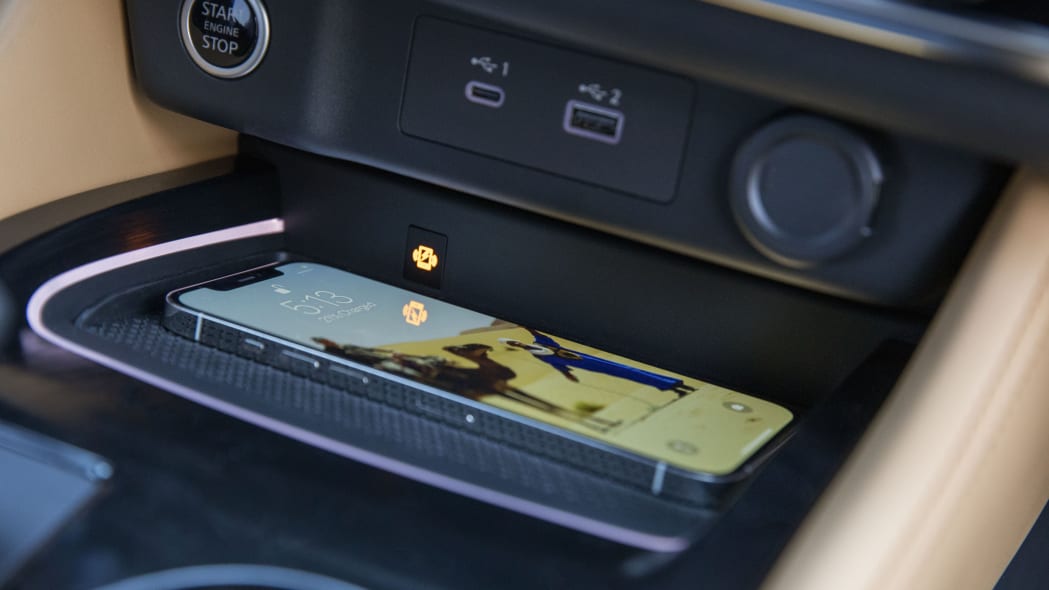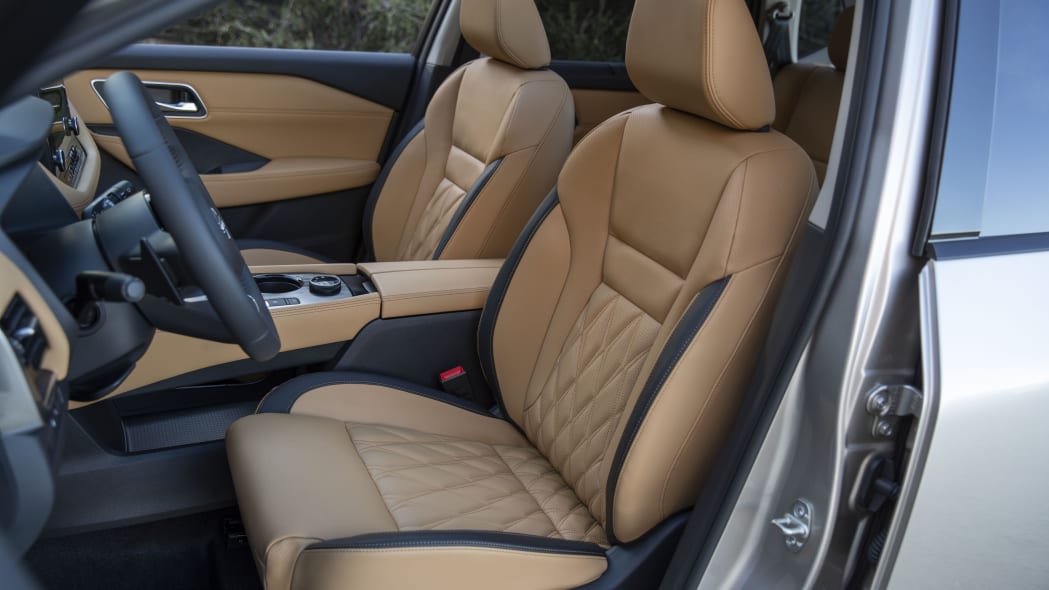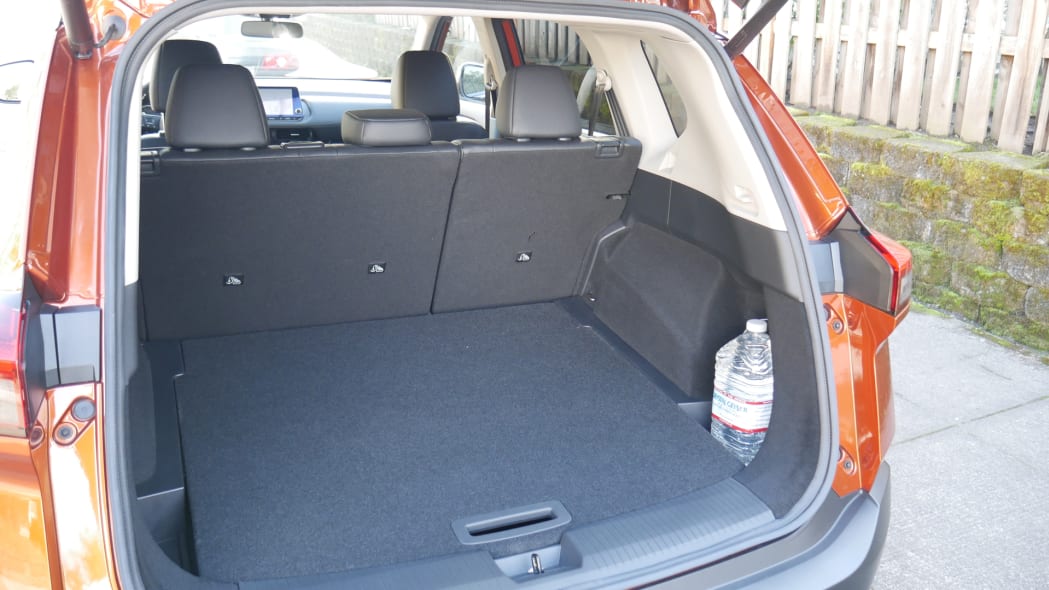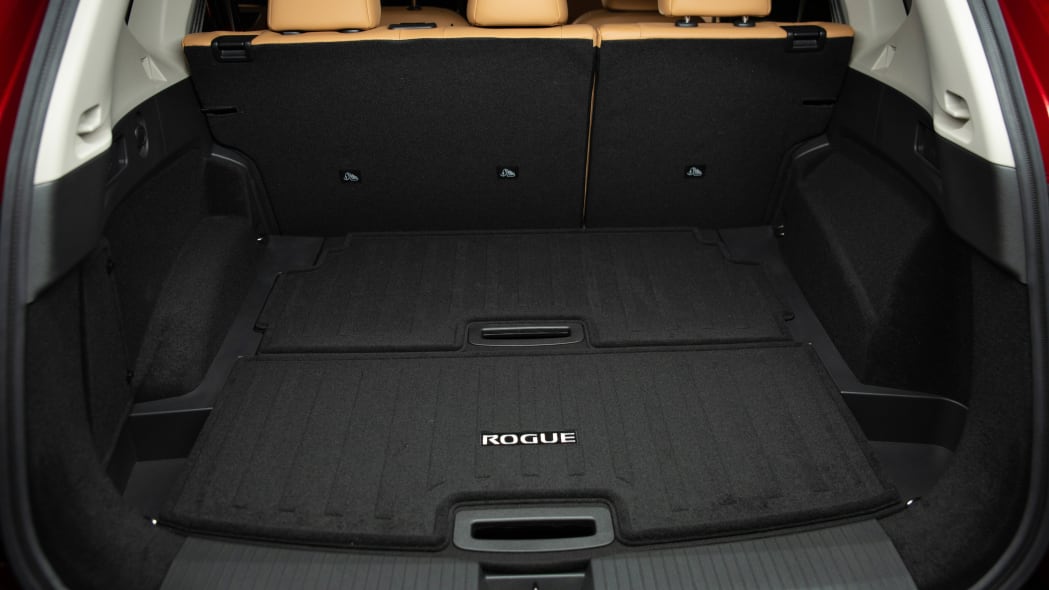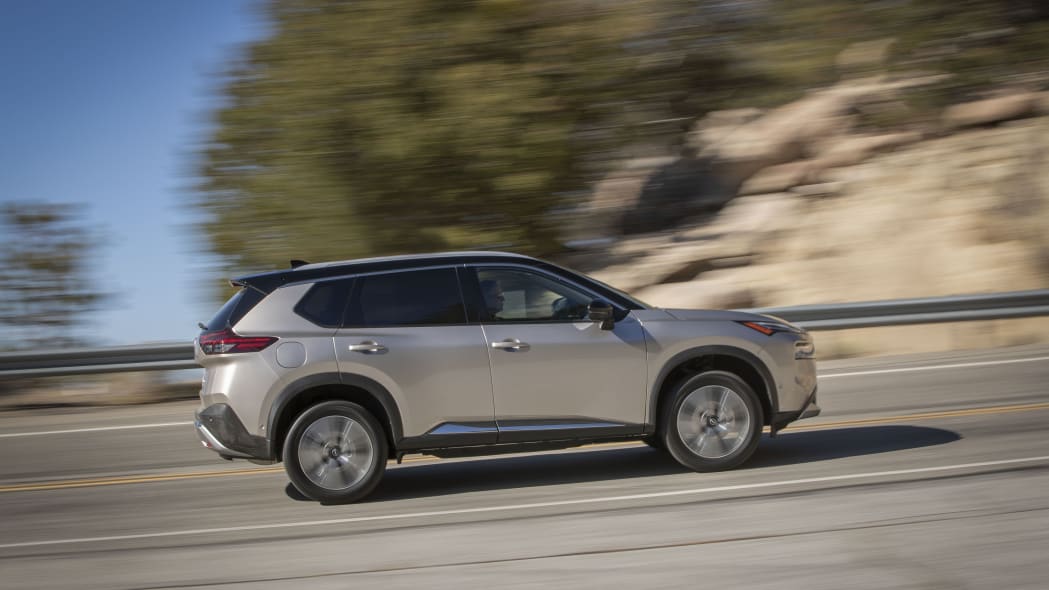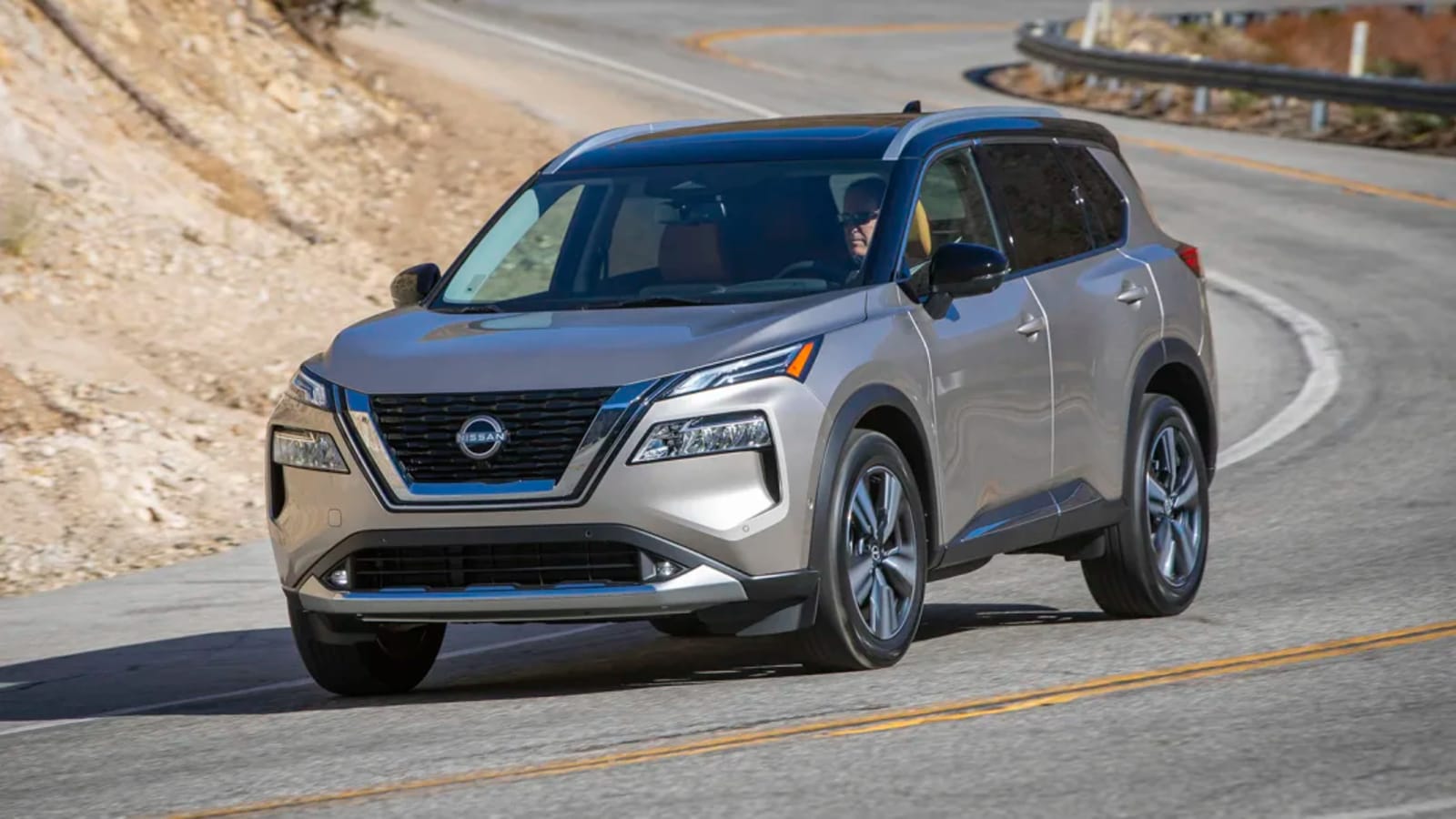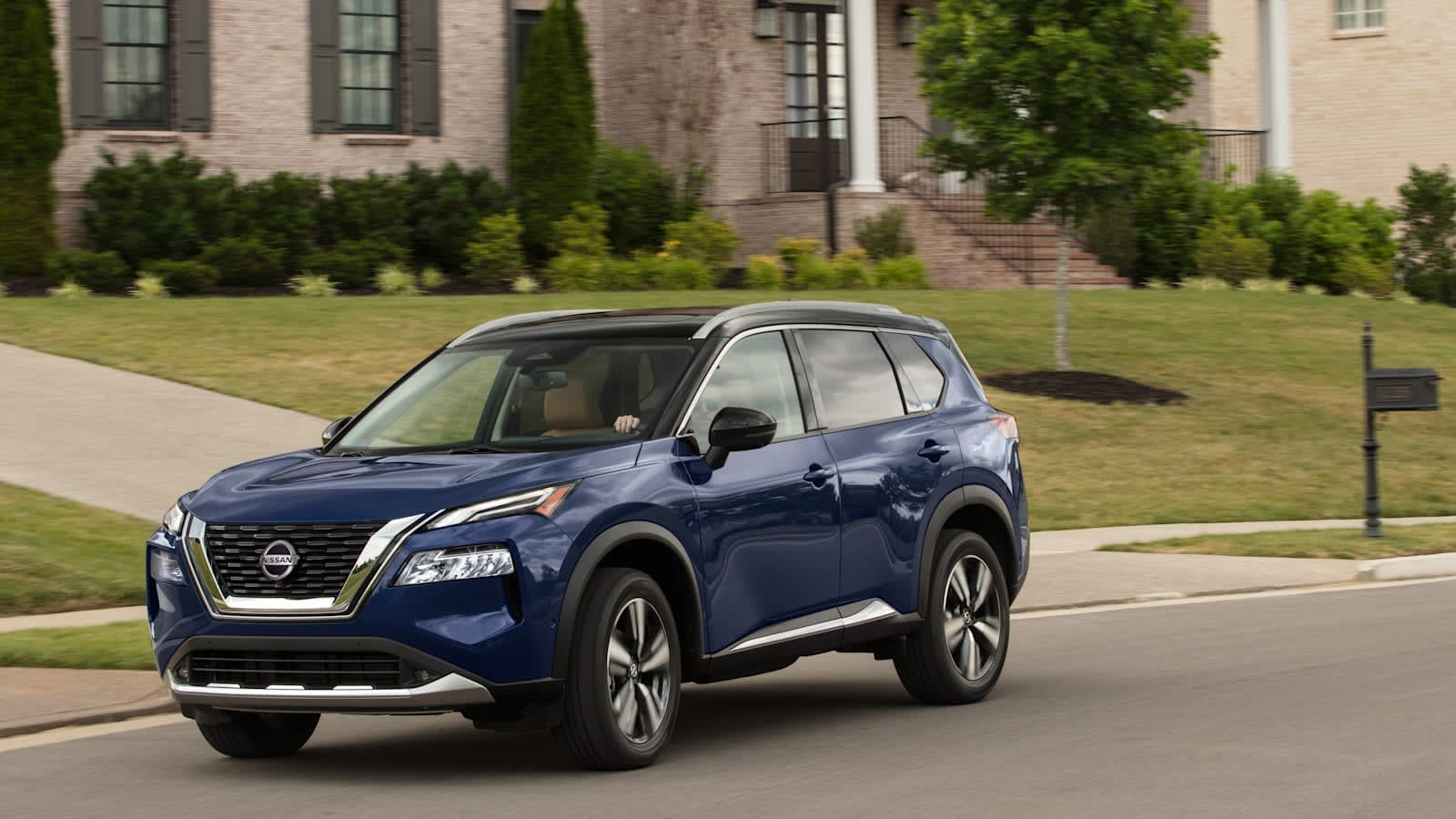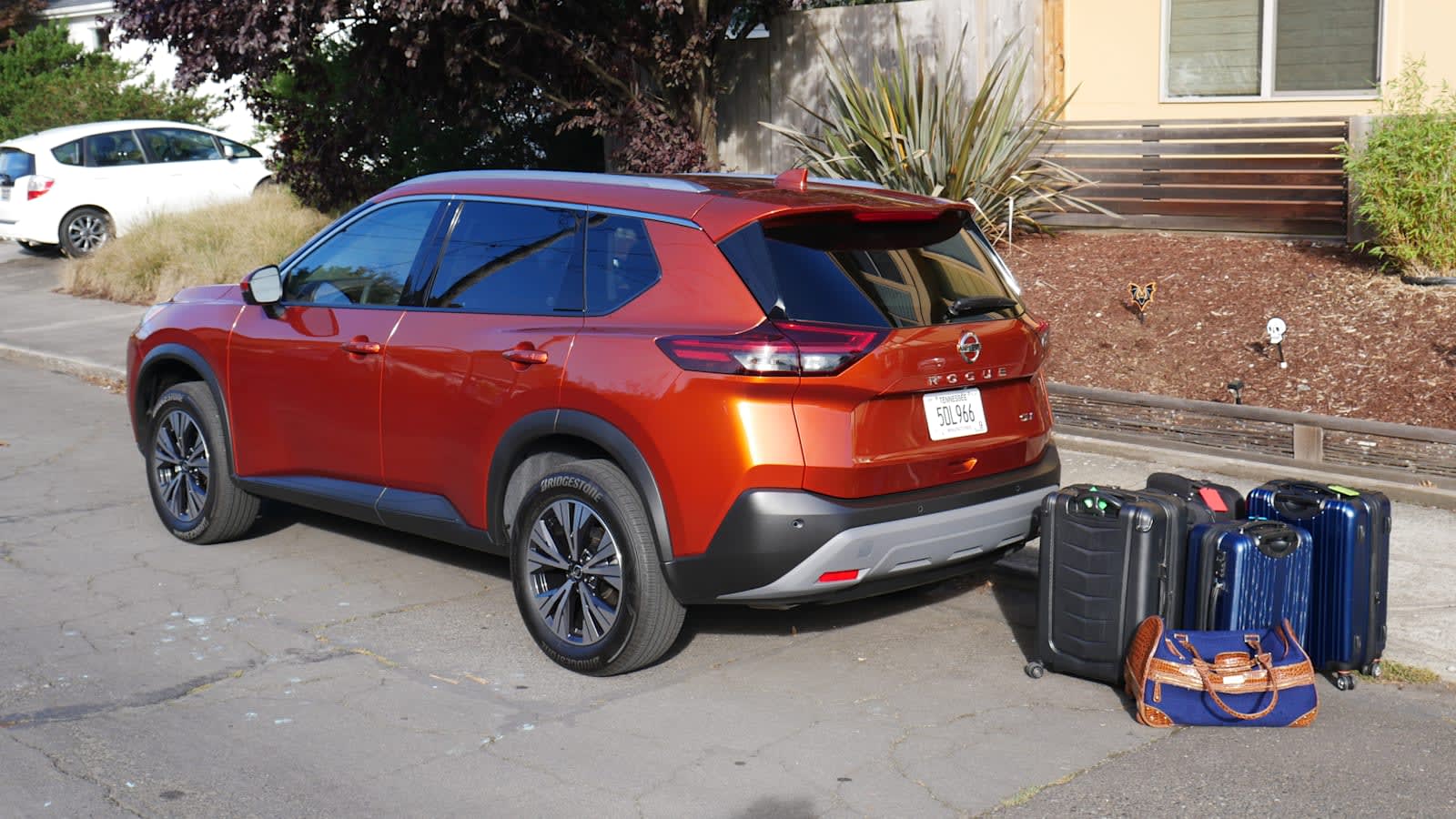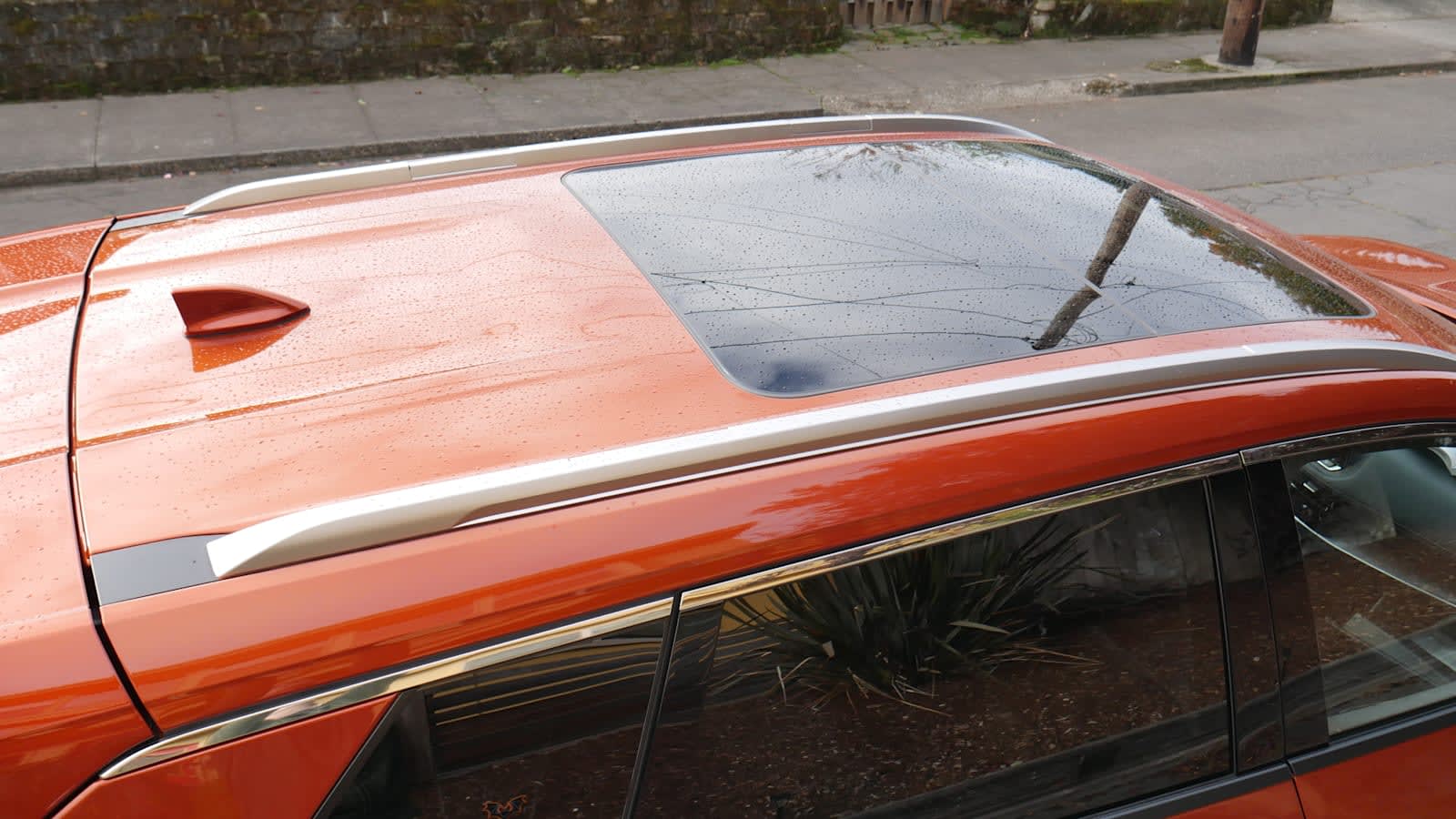Pros: Top-notch interior; easy-to-use tech; clever cargo options; smart ProPilot driver assist
Cons: No hybrid option; less engaging to drive than rivals; no sporty or outdoorsy variants
The 2023 Nissan Rogue follows on two years of successive (and successful) overhauls to Nissan’s small crossover. Redesigned entirely for 2021 and subjected to a much-needed powertrain upgrade last year, the 2023 Rogue is now a solid entry in the hyper-competitive compact crossover segment. While the Rogue may only offer three cylinders, its engine is the most potent base power plant currently offered in the class. The weird little three-banger even gives it a certain amount of offbeat character. Unlike its key competitors, however, the Rogue is not offered with an electrified powertrain, despite the fact that Nissan has previously sold the Rogue in hybrid guise.
The Rogue isn’t quite as polished to drive nor as roomy as the class leaders, but it’s no slouch in either department. Its upper trims are well-adorned and comfortable, and its infotainment systems, while perhaps lacking in flash, are robust and well-executed. The Rogue also offers plenty of storage and interior space, just shy of the Hyundai Tucson, Kia Sportage, Toyota RAV4 and Honda CR-V. We’d ultimately pick one of those before the Rogue, but Nissan’s compact SUV also isn’t too far off the pace and deserves a look.
Interior & Technology | Passenger & Cargo Space | Performance & Fuel Economy
What it’s like to drive | Pricing & Trim Levels | Crash Ratings & Safety Features
What’s new for 2023?
After back-to-back model years of noteworthy changes, Nissan’s product planners are taking a breather. For 2023, availability of the Midnight Edition has been expanded to the SV trim. Apart from that and a miniscule $210 price increase, 2023 is an uneventful year for Nissan’s still relatively new (and vastly improved) small crossover.
What are the Rogue interior and in-car technology like?
The best element of the Rogue is its interior, which is right at the top of its class in both design and quality. A number of two-tone interior color combinations are offered, but even an all-black SV tester featured a weave-like pattern to the leatherette upholstery that nicely spruced things up. Even the open pore “wood” on the Platinum is convincing to the eye, if still fake. That top trim is also adorned with contrast stitching on the doors, dash and the seats. The latter of which are covered in semi-aniline leather and feature Nissan’s incredibly comfortable “Zero Gravity” seat design front and rear.
The dash and center console consist of a pleasing combination of digital screens and physical controls. An 8-inch infotainment touchscreen is standard, but the top Platinum trim gets an upsized 9-inch screen. Apple CarPlay and Android Auto are standard with both screens, but the 9-inch screen comes with wireless Apple CarPlay. Lower grades get an analog instrument panel with a 7-inch display in the center (no complaints with either), but the Platinum trim comes with a fully-digital 12.3-inch panel that’s easy to read and moves through the various screens and menus quickly via steering wheel buttons. A large head-up display comes paired with the fully digital instrument panel, too. Other available features we like include a panoramic sunroof, tri-zone climate control and a wireless phone charger.
How big is the Rogue?
The Rogue measures up well versus other compact crossovers. It has one of the more passenger-friendly back seats in the segment, one that measures up with the RAV4, CR-V, Tucson and Sportage. We found there is plenty of room for a rear-facing infant car seat and it’s one of the few vehicles that provides a LATCH anchor in the middle position, but the anchor points were not big enough to accommodate our Gracco car seat’s clips. As always, we’d recommend bringing along your own car seat on a test drive.
Maximum cargo capacity (second row dropped) is up to 74.1 cubic feet, a number that barely trails the class best CR-V, at 76.5 cubes. Space behind the raised second-row comes out to 31.6 cubic feet, which we found to be a very useful amount. Still, it also couldn’t fit quite as much as the Sportage, Tucson, Forester, RAV4 and last-gen CR-V in our testing. However, we tested a Rogue without the innovative and useful “Divide-N-Hide” cargo floor. Besides increasing cargo volume to 36.5 cubic feet, it consists of two movable floorboards — keep them in for a flat floor; remove them for additional depth, or arrange them into a stacked formation to divide the cargo area into separate parts. A new milk gallon holder aft of the wheels is built into the cargo area floor, so now your gallon of milk, water or whatever won’t annihilate the rest of your groceries on the way back from the store.
What are the Rogue fuel economy and performance specs?
For 2023, the Rogue is only available with a 1.5-liter turbocharged inline-three that produces 201 horsepower and 225 pound-feet of torque. These figures give the Rogue one of the strongest standard engines in the compact SUV segment (it used to have one of the weakest). Front- and all-wheel-drive versions are available, but every Rogue still has a continuously variable transmission standard.
Fuel economy with front-wheel drive is 30 mpg city, 37 mpg highway and 33 mpg combined (it falls to 29/36/32 with the SL and Platinum trims). The all-wheel-drive Rogue returns 28/35/31, with the SL and Platinum differing with 34 mpg highway.
Unfortunately, there is no Rogue hybrid or plug-in hybrid.
What’s the Rogue like to drive?
The new engine Nissan introduced for 2022 replaced the lump we previously described as “a total bore.” One of the big surprises is that the little three-cylinder turbo actually sounds smoother than the four-cylinder from which it’s derived. Power delivery is mighty smooth, too. The turbo spools up fast and gives you easy-to-use down-low torque, especially around town. Like many small turbo engines, though, it starts to lose steam when revs rise as you accelerate hard up an on ramp, for instance. As for the CVT, it’s still not particularly impressive, but does the job fine. It’s programmed to act like a conventional automatic transmission, and ratio changes are silky. It doesn’t react quickly, though, such as when you ask for a kick-down for passing or hitting an onramp.
Nissan has tuned the Rogue for comfort, and it shows. This crossover rides admirably over bumps, highway frost heaves and potholes. It’s not luxurious, but it’s up to par for the segment. And even though engine noise is down, wind noise is still annoying at highway speeds. Where the previous Rogue was a noticeably poor driver, this new Rogue is competent and melts into the background without wowing or annoying us. That said, the steering still has zero feel, and the handling in general is mediocre. It’s perfectly acceptable, but if you want to be engaged as a driver, many competitors remain a better choice.
What other Nissan Rogue reviews can I read?
Dig deeper into the new engine for 2022 and how it dramatically improves the Rogue.
Dig deeper into everything else related to the all-new Nissan Rogue (just ignore everything we say about the sad-sack engine).
We show how much stuff can fit behind the Rogue SV’s raised back seat. Note that this is without the available Divide N Hide cargo system.
he Nissan Rogue has fake roof rails
The Rogue has unusual faux roof rails that disguise plug-in points for a Nissan crossbar accessory.
What is the 2023 Rogue’s price?
Pricing for the 2023 Nissan Rogue starts at $28,585, including the $1,295 destination charge. All-wheel drive is a $1,500 option on all trim levels.
Unlike most of its rivals, the Rogue does not offer special niche trim levels that cater to buyers seeking a sportier look and driving experience, or something more rugged in appearance and capability. There’s also no hybrid or plug-in hybrid. Instead, the Rogue has a more typical ladder-type trim level structure where you get the same basic experience with more and more equipment as you climb the ladder. The Platinum is the most different given its notably more luxurious interior look and materials.
- S: $28,655
- SV: $30,345
- SL: $35,005
- Platinum: $38,435
What are the Rogue safety ratings and driver assistance features?
The 2022 Rogue’s long list of standard safety equipment includes forward collision warning with automatic emergency braking and pedestrian detection, rear automatic braking (a rare feature), lane-departure warning, blind-spot and rear cross traffic warning systems, driver inattention warning, a rear seat occupant reminder and auto high beams. Some of these systems are optional or not available at all on rival crossovers. If you step up above the base trim, you add ProPilot Assist, which is a comprehensive driving assistant for the highway. It includes adaptive cruise control, and a capable lane-centering system that’s more sophisticated than what is offered by rivals. Traffic sign recognition and ProPilot with Navi-Link (uses the navigation system to make ProPilot usable on highway junctions and exits) come as standard on the highest trim.
The Rogue received four out of five stars for overall crash protection from the National Highway Traffic Safety Administration. It got four stars for frontal protection and five stars for side protection. The Insurance Institute for Highway Safety named it a Top Safety Pick+, the highest honor, for sufficiently high ratings in all pertinent categories.


